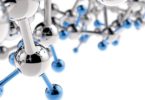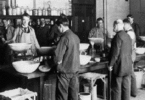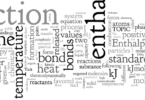Chemical Kinetics Multiple Choice Questions Answers:
Ques. Order of a reaction is decided by
(a) Pressure
(b) Temperature
(c) Molecularity
(d) Relative concentration of reactants
Ques. The minimum energy necessary to permit a reaction is
(a) Internal energy
(b) Threshold energy
(c) Activation energy
(d) Free energy
Ques. What is the order of a reaction which has a rate expression rate = K[A]3/2 [B]–1
(a) 3/2
(b) 1/2
(c) 0
(d) None of these
Ques. The formation of gas at the surface of tungsten due to adsorption is the reaction of order
(a) 0
(b) 1
(c) 2
(d) insufficient data
Related: Ray Optics Problems and Solutions
Ques. A catalyst increases the rate of a chemical reaction by
(a) Increasing the activation energy
(b) Decreasing the activation energy
(c) Reacting with reactants
(d) Reacting with products
Ques. The time of completion of 90% of a first order reaction is approximately
(a) 1.1 times that of half life
(b) 2.2 times that of half life
(c) 3.3 times that of half life
(d) 4.4 times that of half life
Ques. The rate constant of a reaction depends on
(a) Temperature
(b) Mass
(c) Weight
(d) Time
Ques. In a photochemical reaction, the ratio of number of dissociate molecules and number of quanta of absorbed energy is called
(a) Einstein
(b) Quantum efficiency
(c) Quantum constant
(d) Planck constant
Related: Multiple Choice Quiz on Kingdom Protista
Ques. A first order reaction requires 30 minutes for 50% completion. The time required to complete the reaction by 75% will be
(a) 45 minutes
(b) 15 minutes
(c) 60 minutes
(d) None of these
Ques. The rate of a gaseous reaction is given by the expression K [A][B]. If the volume of the reaction vessel is suddenly reduced to 1/4th of the initial volume, the reaction rate relating to the original rate will be
(a) 1/10
(b) 1/8
(c) 8
(d) 16
Ques. Inversion of sucrose is
(a) Zero order reaction
(b) First order reaction
(c) Second order reaction
(d) Third order reaction
Ques. A catalyst increases the rate of reaction because it
(a) Decreases the energy barrier for reaction
(b) Increases the activation energy
(c) Decreases the collision diameter
(d) Increases the temperature coefficient
Related: plant nutrition mcq
Ques. Half life period of second order reaction is
(a) Proportional to the initial concentration of reactants
(b) Independent of the initial concentration of reactants
(c) Inversely proportional to initial concentration of reactants
(d) Inversely proportional to the square of the initial concentration of reactants
Ques. The law of photochemical equivalence was given by
(a) Drapper
(b) Grauths
(c) Einstein
(d) Labbert
Ques. If initial concentration is reduced to its 1/4th in a zero order reaction, the time taken for half of the reaction to complete
(a) Remains same
(b) Becomes 4 times
(c) Becomes one-fourth
(d) Doubles
Ques. The rate constant is doubled when temperature increases from 27°C to 37°C. Activation energy in kJ is
(a) 34
(b) 54
(c) 100
(d) 50
Related: Chemical Bonding questions
Ques. A reaction that is of the first order with respect to reactant A has a rate constant 6 min–1 . If we start with [A] = 0.5 mol l–1, when would [A] reach the value 0.05mol l–1
(a) 0.384 min
(b) 0.15 min
(c) 3 min
(d) 3.84 min
Ques. The reason for almost doubling the rate of reaction on increasing the temperature of the reaction system by 10oC is
(a) Collision frequency increases
(b) The fraction of the molecule having energy equal to threshold energy or more increases
(c) Activation energy decreases
(d) The value of threshold energy increases
Ques. A first order reaction which is 30% complete in 30 minutes has a half-life period of
(a) 24.2 min
(b) 58.2 min
(c) 102.2 min
(d) 120.2 min
Related: Chemical Periodicity quiz
Ques. The number of collisions depend upon
(a) Pressure
(b) Concentration
(c) Temperature
(d) All the above
Ques. Time required for completion of ionic reactions in comparison to molecular reactions is
(a) Maximum
(b) Minimum
(c) Equal
(d) None
Ques. The rate of reaction between two reactants A and B decreases by a factor of 4 if the concentration of reactant B is doubled. The order of this reaction with respect to reactant B is
(a) – 1
(b) – 2
(c) 1
(d) 2
Related: Circular Motion mcq
Ques. Which is correct about zero order reaction?
(a) Rate of reaction depends on decay constant
(b) Unit of rate constant is concentration
(c) Unit of rate constant is concentration 1 time
(d) Rate of reaction is independent of concentration







By solving these questions, my doubts are almost cleared.
IMPRESSIVE